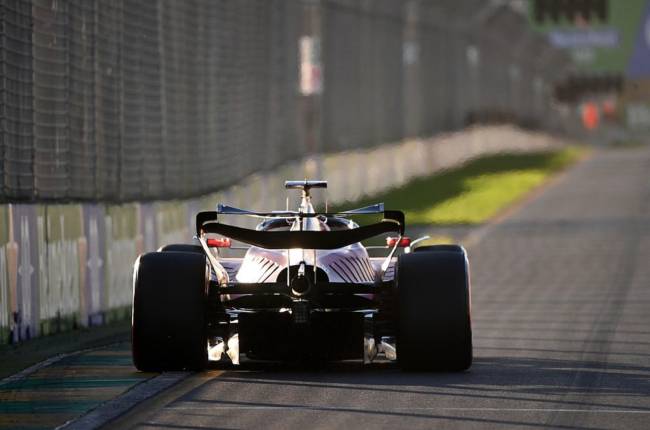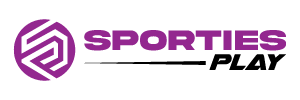During a Grand Prix, you might hear the announcers mention that a driver has activated DRS during a tight battle between two contenders. This high-tech-sounding term refers to a drag reduction system that helps drivers gain speed when overtaking. A slot in the rear wing opens when DRS is active, reducing drag so that a driver can accelerate more smoothly.
Table of Contents
What is DRS?
In F1 cars, the drag reduction system consists of a portion of the rear wing that opens to reduce aerodynamic drag. The system boosts a car’s top speed by about seven miles per hour, allowing drivers to overtake an opponent. Several fans and commentators call the flap that opens the rear wing the “mail slot” since it resembles a door or mailbox slot.
By giving an F1 driver a slight advantage in straight-line speed over a car they are closely following, this system improves overtaking in the sport. It’s one of the most exciting parts of motorsport that other racing federations have implemented similar innovations to encourage overtaking.

When Did DRS Enter Formula One?
Formula One allowed DRS for the first time in 2011. In order to implement the DRS technology, FIA rules pertaining to aerodynamic packages on cars had to be changed.
In the past, downforce-generating components of vehicles could not move for safety reasons. As technology improves, teams may be able to implement DRS without compromising the stability of their cars.
When Can Drivers Activate DRS?
DRS can’t be activated at any time by the driver. Each track has several designated DRS zones, which are areas where the system can be used. DRS can be turned on by the driver if they’re eligible. The dashboard illuminates to let drivers know when DRS is available, and they can turn it on at any time using a button on their steering wheel.
In a race, DRS isn’t active all the time. Two laps after the start of the race, the system is turned on. After a yellow flag, a safety car, or a red flag restart, DRS is also unavailable for the first two laps. Additionally, the race director can limit the use of DRS during races with dangerous conditions, such as heavy rain.
What are the Factors When a Driver Will Have DRS Available?
There are several factors that determine whether a driver will have access to DRS. When drivers are preparing for qualifying sessions, DRS is available for free, allowing them to set the fastest lap possible. F1 races, however, restrict the use of this feature. When passing a DRS detection point, cars can only access DRS if they follow the car in front of them within one second. It is usually just before the DRS zone that these activation zones are marked on the track.
There are many drivers who are aware of the DRS activation zones and use them while driving. In the 2022 Saudi Arabia Grand Prix, Ferrari’s Charles Leclerc and Red Bull’s Max Verstappen were neck-and-neck to the finish. In order to avoid being the first one over the line, the drivers slammed their brakes as they approached the DRS detection point. When you cross the detection point first, the following car will have DRS over you, making it easy to overtake you on the next straightaway.
Where are DRS Zones on a Track?
DRS use is restricted to straightaways since activated DRS reduces downforce. When cars lack downforce, they may have trouble handling and cornering, resulting in locking the breaks or sliding. Recent aerodynamic regulations have made it easier for vehicles to use DRS without losing much stability. For good handling, they rely much more heavily on ground effects.
Every F1 track has at least one DRS zone, though many have more than one. High downforce tracks like Singapore or Monaco are much more affected by DRS than low downforce tracks like Monza, Saudi Arabia, or Bahrain. Because low-downforce power tracks produce less drag on vehicles, they benefit less from drag reduction.
Why is DRS Necessary?
In order to enhance the excitement of racing, the FIA instituted DRS. Vehicles had difficulty following one another closely before the 2022 regulations, which enabled ground effects to be used for stability. Cars push through the air leaving a turbulent wake behind them, known as dirty air. This turbulent air affects how the next car handles and can also cause brakes and tires to overheat, affecting stopping ability.
Due to the widespread use of DRS, side-by-side racing is encouraged. Because a trailing car can challenge a leading vehicle, drivers can enter an evenly matched braking zone. As a result, any driver can win a race or compete in the World Championship, creating an exciting spectacle.
Conclusion: What is DRS in F1?
The next time your favorite F1 driver tears down the straightaway behind their rival, pay close attention to their rear wing. As they follow closely enough, you should see a slot in their rear wing open, allowing them to take advantage of their drag reduction system and boost their speed.
In the past decade, DRS has been one of Formula 1’s most exciting innovations. As a result, races are more competitive, and more drivers have the chance to place on the podium.
FAQs
As long as transportation itself has existed, aerodynamic adjustments have been around. The drag reduction system has become a key part of an overall race plan, just as fuel and tires are. The number of cars jockeying for position with a legitimate chance to overtake has increased. This adds suspense and excitement to a race. Usually, that is the case, but since a race leader isn’t permitted to use the rear wing, two drivers can end up playing “DRS chicken.”
